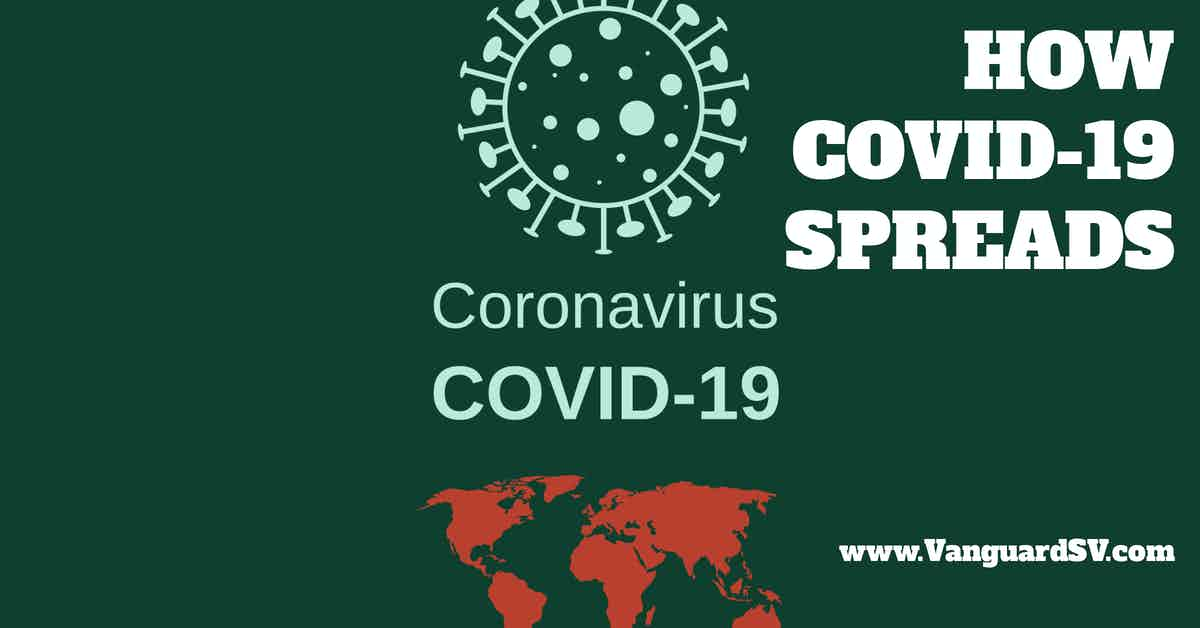A recent update to the U.S. Centers for Disease Control and Prevention's (CDC) Coronavirus Disease 2019 (COVID-19) page regarding information about how SARS-CoV-2 spreads from person to person underscores the importance of facility cleaning and long-established social distancing guidelines.

Updated Information Regarding the Transmission of SARS-CoV-2
Though speculative, the first case of COVID-19 appears to have occurred in the U.S. around late December 2019, or early January 2020.
Since then, a great deal of time, energy, resources, and debate has been focused on how the virus spreads and, more precisely, how to stop it from spreading further.
A key factor in understanding and combatting the virus is asymptomatic transmission, whereby a person is contagious, but displaying no symptoms, so unlikely to adhere to the strictest of safety recommendations, thereby increasing the likelihood of transmission to others.
Compounding the understanding of the asymptomatic transmission issue is the concept of presymptomatic transmission.
SARS-CoV-2 has a long--between two and fourteen days--incubation period where a person is infected, potentially contagious, but not displaying symptoms, where they can spread the disease.
Updated scientific studies have shown that asymptomatic transmission is incredibly rare, though possible.
It is currently believed that the severity of the infection is directly proportional to a patient's potential for infecting others; i.e., the sicker they are, the more contagious they are.
Additionally, it appears that the chances of the virus spreading are increased in direct proportion to proximity and time spent around a contagious person.
CDC continues to believe, based on current science, that people are more likely to become infected the longer and closer they are to a person with COVID-19.
The latest update acknowledges the existence of some published reports showing limited, uncommon circumstances where people with COVID-19 infected others who were more than 6 feet away or shortly after the COVID-19-positive person left an area.
In these instances, transmission occurred in poorly ventilated and enclosed spaces that often involved activities that caused heavier breathing, like singing or exercise.
Presymptomatic transmission, especially in the home or relaxed environments where masks are not worn, and social distancing guidelines are not strictly enforced, maybe the primary source of infectious transmission.
Researchers from Southern Medical University in Guangzhou penned a study in Annals of Internal Medicine that says asymptomatic transmission is rare.
The researchers studied the “secondary attack rate” for various groups of COVID-19 infections.
That’s the likelihood of a person spreading the illness to their immediate contacts.
They found that patients who experienced a more severe case of COVID-19 were more likely to infect their close contacts than less severe cases.
“Asymptomatic cases were least likely to infect their close contacts,” the researchers found.
The same update notes that the extent of truly asymptomatic spread in the community remains unknown, and it details other studies that looked at asymptomatic and presymptomatic transmission.
The list includes a modeling study that estimated up to 44% of transmission might have occurred in presymptomatic people just before symptoms appeared.
New study may change what we know about asymptomatic coronavirus spreaders
Methods for Addressing Proven Transmission Methods
The World Health Organization recognizes three primary methods -- either scientifically proven or hypothetical -- of transmitting the SARS-CoV-2 virus:
- Close contact or droplet transmission.
- Fomite transmission, and;
- Airborne, which remains technically hypothetical and clinically unproven.
Close contact and droplet transmission can be avoided by adhering to long-established social distancing guidelines republished every cold and flu season:
- Stay home when you're sick.
- Cover your mouth when you cough or sneeze.
- Avoid close contact with people you believe to be ill or contagious.
- Avoid crowded public areas with poor ventilation, and;
- Work remotely if and where possible.
Fomite transmission is easily addressed through a combination of enhanced cleaning and touchpoint disinfection.
- Clean your office, classroom, and other occupied facility spaces every day with microfiber towels and a commercial-grade soap-based detergent.
- Wipe down high-touch surfaces several times per day with a U.S. Environmental Protection Agency (EPA) approved disinfectant.
- Deep clean and disinfect your entire facility weekly, including floor, ceilings, walls, and furniture.
- Encourage or enforce handwashing protocols before exiting the restroom, and;
- Provide office staff with disinfectant wipes and hand sanitizer to improve workplace and hand hygiene compliance.
References & Resources
- How COVID-19 Spreads
- Contact Settings and Risk for Transmission in 3410 Close Contacts of Patients With COVID-19 in Guangzhou, China
- Transmission of SARS-CoV-2: implications for infection prevention precautions
Takeaway
As time marches on, we gain a deeper understanding of the SARS-CoV-2 virus and how to combat it.
What we have discovered is that, statistically, the coronavirus can be defeated by adhering to many of the same principles and precautionary measures employed during cold and flu season, including increasing the frequency and quality of cleaning and disinfection services.
A proven and cost-effective method for ensuring the highest cleanliness and safety standards is outsourcing daily and specialized custodial services to an experienced service provider.
If you would like more information regarding the effectiveness of high-performance infection prevention and control measures, or if you would like to schedule a free, no-obligation onsite assessment of your facility's custodial needs, contact us today for a free quote!
In Bakersfield CA, call (661) 437-3253
In Fresno CA, call (559) 206-1059
In Valencia CA, or Santa Clarita CA, call (661) 437-3253
In Palmdale CA, or Lancaster CA, call (661) 371-4756

